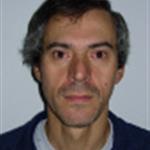Advanced Search
One Plate-double Nutrient Endospore Activation Method
Published: Jan 5, 2020 DOI: 10.21769/BioProtoc.3474 Views: 3314
Abstract
This paper presents a simple, swift, improved and inexpensive one plate-double nutrient endospore activation method (ODNEAM) for activation of thermophilic endospore (thermospore). Revival and cultivation of dormant bacteria experiencing un-culturable state is a difficult task. Long-term preservation at low temperature (4 °C or below) under laboratory conditions pushes most of the gram-positive bacteria to form endospores and enter dormancy. After experienced dormancy and crossed specific time (more than a month) it’s difficult for those thermospores to resurrect into a living cell. The effect of low temperature, a double quantity of nutrients and high humidity (80 %) was re-revaluated to foster germination of thermospores. Employed parameters successfully revived thermospores which experience dormancy or unable to initiate the germination process upon onset of favorable conditions. This method has crucial importance for activation of the dormant thermospore. Long-term preservation under low temperature or no sub-culturing at a fixed time interval of thermophilic bacteria may be a cause for least revival rate and the progressively diminished revival rate. The inactivation of cells after long-term preservation and probable loss to science would be avoided using this one plate-double nutrient endospore activation method. This is a tribute to Harold F. Foerster−A renowned microbiologist (1983).
Keywords: EndosporeBackground
Thermophilic endospores (thermospores) are resistant structures. Thermospore represents resting phase/form of thermophilic bacteria which has the ability to survive under adverse conditions over a long time period and revive after arrival of favorable conditions. According to the thermophilic nature of these Bacilli, these spores are named “thermospores”. Thermophilic bacteria Gram-positive and few Gram-negative would initiate process of formation of endospores upon onset of adverse conditions such as high or low temperature, salt, nutrients, water activity, oxic and anoxic conditions. Thermospore can survive in natural harsh environment (hot springs, hydrothermal areas, acid mines, alkaline lakes, salt lakes, ocean waters and sun-heated soils) and artificial extreme environments (xenobiotic environments, dumping sites, heaters, geysers, compost piles and dry areas). According to the growth temperature, microorganisms can be classified into psychrophiles, mesophiles, thermophiles, extreme thermophiles and hyperthermophiles. Temperature is a prime factor for the growth and development of thermophilic Gram-positive Bacilli and Gram-negative Sporomusa spp. 
Figure 1. Typical endospore of bacteria
Experimental evidence shows that at non-optimal conditions thermophilic Bacilli have different adaption strategies. Whereas non-sporulating bacteria can produce solutes and heat shock protein for their survival. However, thermophilic bacteria and/or thermospore fail to revive after long-term preservation of without sub-culture longer than a month period. This gives a clue that revival of endospore requires optimum growth conditions which may differ than optimum growth parameter for exponentially growing cell. The revival of such dormant endospores at low temperature was primarily explored in the early 1980s by Harold F. Foerster (Foerster, 1983). He has proposed how to activate and re-grow endospore from Bacillus spp. In this protocol, we propose a modified procedure which consumes only one plate with double concentration of nutrients and applicable for thermophiles. This standardized protocol can be employed for the activation of mesophilic bacterial endospores. Moreover, we propose a specific incubation condition and simple protocol for activation of dormant. This is a tribute to Harold F. Foerster (1983).
Materials and Reagents
- Polypropylene bottle (Tapper ware)
- Glass slides
- Eppendorf tube (1.5 ml, Abdos Labtech Pvt. Ltd.)
- Tryptone yeast extract agar (Himedia Pvt. Ltd., catalog number: M1272)
- Nutrient agar (Himedia Pvt. Ltd., catalog number: M001)
- Sporulation agar (Himedia Pvt. Ltd, catalog number: M1018.)
- Physiological isotonic saline (0.8% [w/v] NaCl)
- Endospore specific malachite green (1% w/v) (Himedia Pvt. Ltd., catalog number: S020)
- Safranin, 0.5% (w/v) (Himedia Pvt. Ltd., catalog number: S027)
Note: You could use the kit (below) as an alternative, it contains the same materials as 8 and 9. - Schaeffer & Fulton’s Spore Stain–Kit (Himedia Pvt. Ltd., catalog number: K006-1KT)
S028 Schaeffer & Fulton’s Spore Stain A
S029 Schaeffer & Fulton’s Spore Stain B
Equipment
- Laminar (Micro Filt India, model: MFI V 4x2)
- Autoclave (Kumar Enterprises)
- Incubator (Kumar Enterprises)
- Cooling centrifuge (Remi C24)
- Refrigerator (Godrej)
- Olympus biological microscope (Olympus, model: CX33)
Procedure
Category
Microbiology > Microbial genetics > Gene mapping and cloning
Environmental science > Bacterium > Isolation
Do you have any questions about this protocol?
Post your question to gather feedback from the community. We will also invite the authors of this article to respond.
Share
Bluesky
X
Copy link



